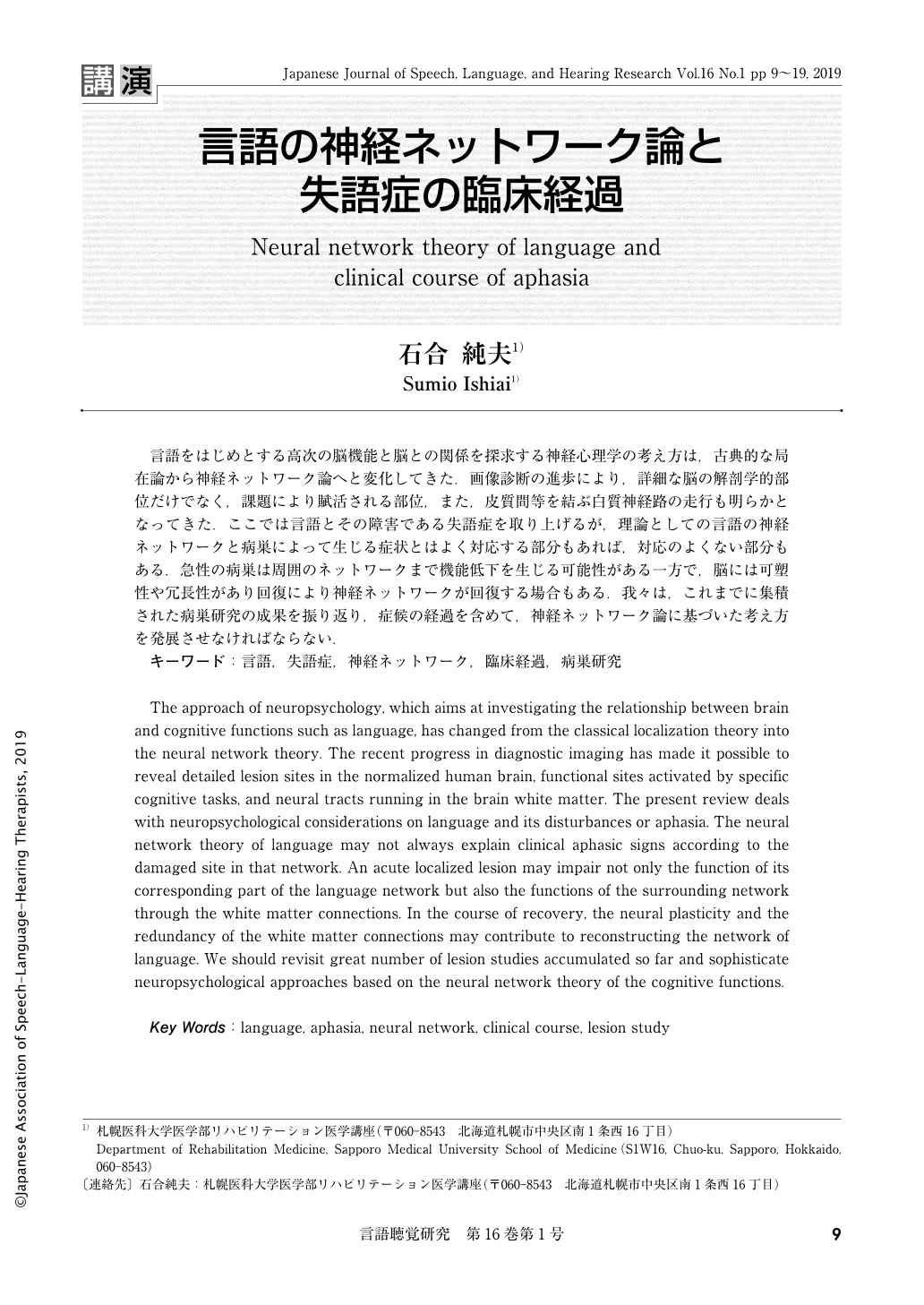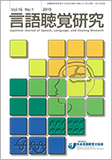Japanese
English
- 有料閲覧
- Abstract 文献概要
- 1ページ目 Look Inside
- 参考文献 Reference
言語をはじめとする高次の脳機能と脳との関係を探求する神経心理学の考え方は,古典的な局在論から神経ネットワーク論へと変化してきた.画像診断の進歩により,詳細な脳の解剖学的部位だけでなく,課題により賦活される部位,また,皮質間等を結ぶ白質神経路の走行も明らかとなってきた.ここでは言語とその障害である失語症を取り上げるが,理論としての言語の神経ネットワークと病巣によって生じる症状とはよく対応する部分もあれば,対応のよくない部分もある.急性の病巣は周囲のネットワークまで機能低下を生じる可能性がある一方で,脳には可塑性や冗長性があり回復により神経ネットワークが回復する場合もある.我々は,これまでに集積された病巣研究の成果を振り返り,症候の経過を含めて,神経ネットワーク論に基づいた考え方を発展させなければならない.
The approach of neuropsychology, which aims at investigating the relationship between brain and cognitive functions such as language, has changed from the classical localization theory into the neural network theory. The recent progress in diagnostic imaging has made it possible to reveal detailed lesion sites in the normalized human brain, functional sites activated by specific cognitive tasks, and neural tracts running in the brain white matter. The present review deals with neuropsychological considerations on language and its disturbances or aphasia. The neural network theory of language may not always explain clinical aphasic signs according to the damaged site in that network. An acute localized lesion may impair not only the function of its corresponding part of the language network but also the functions of the surrounding network through the white matter connections. In the course of recovery, the neural plasticity and the redundancy of the white matter connections may contribute to reconstructing the network of language. We should revisit great number of lesion studies accumulated so far and sophisticate neuropsychological approaches based on the neural network theory of the cognitive functions.

Copyright © 2019, Japanese Association of Speech-Language-Hearing Therapists. All rights reserved.


